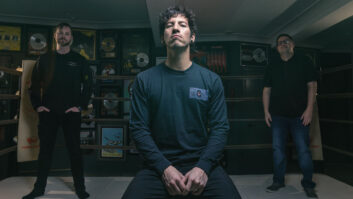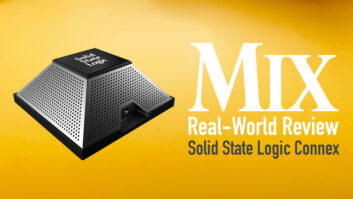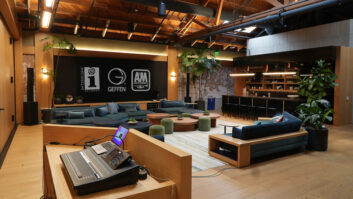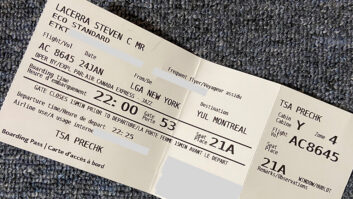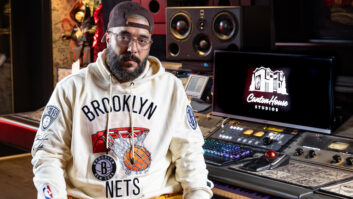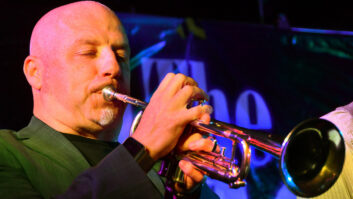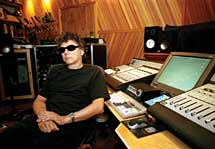
Photo: Sasha Gulish
In Talking Heads, we tried to change our approach on every album. On ’77, we worked with a Disco producer. On More Songs About Buildings and Food, we went to the Bahamas to work with Eno. On Fear of Music, we recorded at our rehearsal loft on a couple Sundays because that was the only day when there wasn’t a lot of noise from trucks driving by. On Remain In Light, we decided to write in the studio so that we could capture an idea’s first bloom. Intrinsically, we knew that by changing the process, different avenues of songwriting and recording would appear, and that we would be stimulated to create fresh and inventive recordings.
As the ’90s began, I turned my attention to producing, wanting to bring the freshness that had defined my work with Talking Heads to the bands I worked with. When I decided to leave Manhattan, I knew that I wanted to be someplace that embraced innovation — and San Francisco was that city. I had always loved playing here; the audiences were exciting and knowledgeable. I think the three days we played the Boarding House still stick out as highlights from Talking Heads’ whole career. There were great clubs, though the scene around the Mabuhay Gardens is the one I most remember. By the time I moved here, the Fillmore had reopened, the clubs South of Market were just beginning and a new energy had infected the city.
It is still a wonderful city in which to see music: All bands make a stop in San Francisco. You can keep up with the world from here, and I go out often. I think there is no better way to understand the growth and change of music than at live shows. Often, just five minutes of a new band’s show will tell me more than hours spent analyzing their demos. Just last night, I saw The Dirtbombs and The Ponys at the Great American Music Hall, and I saw Jackie Green at the Sweetwater in Mill Valley a few nights ago. Very different music; all three bands were great.
Among the musicians we met when we were touring were the Residents, The Tubes, The Avengers, Leila and The Snakes and Pearl Harbor and The Explosions. Though there was a style during the ’60s that could be called “San Francisco Music,” the musicians that break out of here now follow their own route. One only has to think of Primus, Green Day, Third Eye Blind, Train, DJ Shadow, Metallica or Rancid to know how varied the scene is. As in New York and Los Angeles, the city’s musicians have matured to the point that they are inspired by the world of music and not particularly by their local peers. This gives the scene a fractured sense, but for a producer, it offers a wide palette of talented musicians from which to draw. Furthermore, there are more musicians here who have ventured into the esoteric. Whether it’s the investigation of just tuning or studying at the Ali Akbar School of Indian Music, you can find these musical explorers here.
I was also attracted to the innovation coming out of Silicon Valley and the inventors I had met at various AES shows. Long ago, when I moved from organ to synthesizer, I spent a week at Rod Argent’s keyboard shop in London. They were nice enough to let me become familiar with the synthesizers of that era. It turned out most of the companies that interested me — particularly Sequential Circuits and E-mu — were in the San Francisco area. I remember running into Dave Smith, who founded Sequential and was perhaps the first to marry the power of computers with synthesizers, at an AES show in New York. He told me he was on his way to give a paper on the possibility of musical instruments talking to each other in a common language — this was the beginning of MIDI. A little later, I met Peter Gotcher and Evan Brooks from Digidesign and Dave Oppenheim and Chris Hallaby from Opcode. Again, San Francisco was a haven for the software development that pertained to music.
Yet another reason I moved here was the range and scope of recording studios in an area that is conducive to raising a family. Because San Francisco’s studio scene has been developing for some 40 years, there is a wealth of talent, equipment and variety. Though I now have my own studio, Sausalito Sound, I still take advantage of the great variety of studios that grace the San Francisco landscape: from the orchestral room at Skywalker Ranch, to the crazy mirrors and murals of The Plant (not to mention Arne’s investment in new boards) to Fantasy, the drum room of Studio D, the rural comfort of the Site, the new South of Market studio SF Soundworks, and Steven Jarvis and Larry Cragg’s obsession with excellent rental gear — all provide tools to get the job done.
I love to work all over the world. London, New York and Los Angeles have wonderful musicians and studios, but San Francisco is still my home. The variety of talent and resources, the great restaurants and, of course, the beauty of living and working here makes it special. To me, it is the last bastion of liberal, and perhaps free, thinking. It is no accident that the same city that the Beats made their West Coast home, spawned “the Summer of Love” and even found an uneasy alliance with the Hell’s Angels became the center of technological development, and particularly musical technology, in the United States.
Producer and former Modern Lover/Talking Head Jerry Harrison is the owner of Sausalito Sound.
